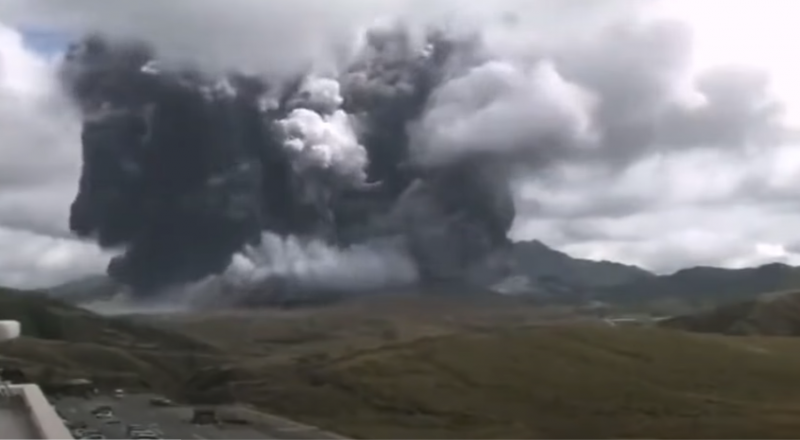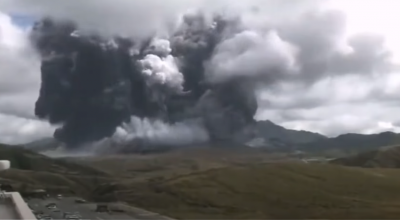After La Palma in Spain, Mount Aso, one of Japan's most active volcanoes, erupted on Wednesday, ejecting ash up to 3,500 meters high and leading to the hurried evacuation of hikers from this tourist site in southwest Japan. No injuries were reported immediately following the eruption of this volcano, which stands 1,592 meters above sea level, resulting in rocks being thrown after a spectacular explosion captured by surveillance cameras.
Authorities warned residents and tourists to stay away from the volcano as hot gases and ash were rising, and rocks were rolling down its green slopes.
Local officials told Japanese media that authorities were checking if hikers were trapped, while footage showed dozens of vehicles and tour buses parked in a garage near a museum overlooking the volcano. Ash flowed from Mount Aso towards the museum but did not reach the site.
Tomowaki Ozaki, an official with the Japan Meteorological Agency, warned during a televised press conference about "large rocks and lava flow." He added that caution is required even in distant areas, as the winds could carry not only ash but also stones, and he cautioned about the potential presence of toxic gases.
The last time the Japan Meteorological Agency issued a warning of this level for Mount Aso's eruption—level 3 on a scale of 5—was in 2016. Japan has several active volcanoes mainly located in a vast area known as the "Pacific Ring of Fire," which records the majority of earthquakes and volcanic eruptions in the world. Mount Aso is situated on Kyushu Island and is one of hundreds of active volcanoes being closely monitored in Japan, including Mount Fuji, which is about a hundred kilometers from Tokyo.
The Japan Meteorological Agency has warned in recent days of increased volcanic activity in the Mount Aso area. It is noteworthy that in September 2014, the eruption of Mount Ontake (3,067 meters above sea level) in central Japan resulted in 63 fatalities, marking the largest disaster of its kind in the country in 90 years.




